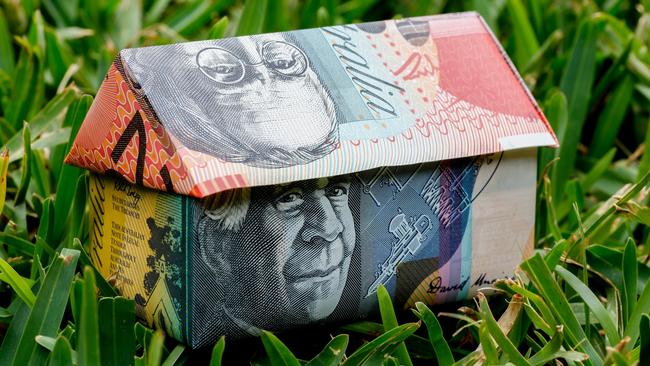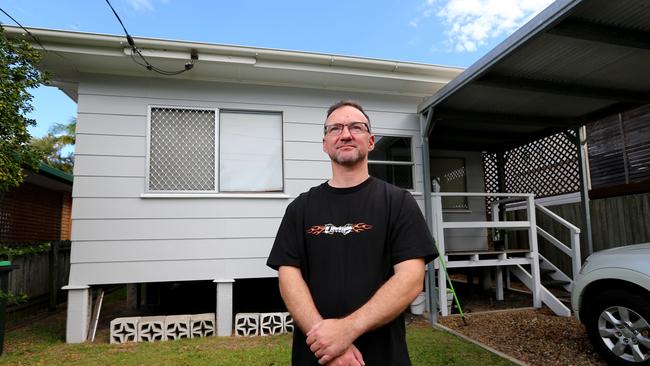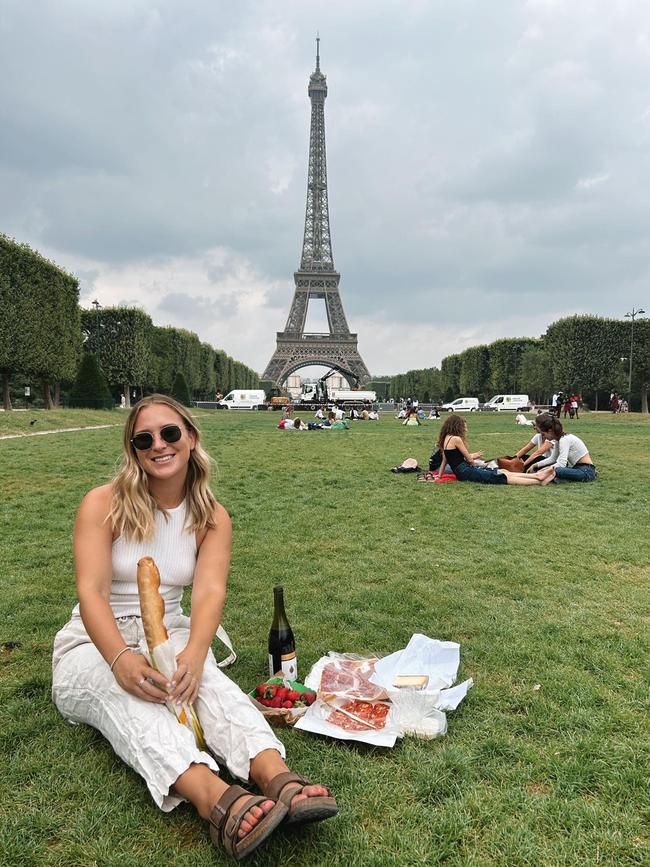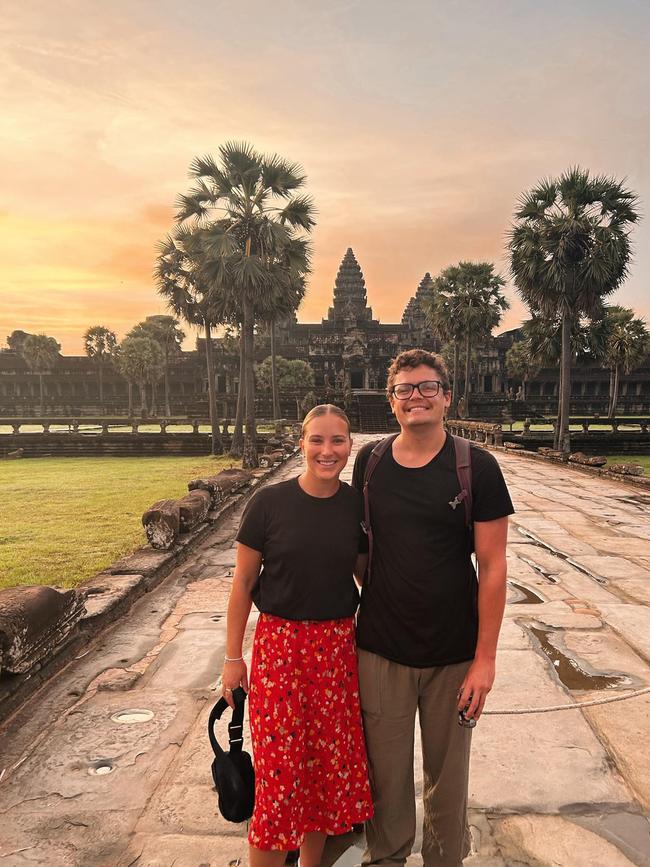Housing crisis and soaring mortgages spark ‘new’ Australian dream for young Aussies
The housing crisis has all-but killed the dream of a quarter-acre block and Hills hoist – where people like Lyle Mildenhall, 43, who has a solid income and reasonable deposit in the bank still can’t afford to buy a home.
Property
Don't miss out on the headlines from Property. Followed categories will be added to My News.
A quarter-acre block, four-bedroom home and a Hills hoist at the back – for generations, the economic security afforded by a concrete slab was the hallmark of the Australian dream.
But the housing market has become a living nightmare for many young people and, from the financial rubble, a new Australian dream is evolving.
Back in 2016, Australian demographer Bernard Salt penned a tongue-in-cheek article blaming young people’s affinity for smashed avocado on toast – a thinly-veiled metaphor for unnecessary spending – for their struggles in the housing market.
But a housing supply crisis, an explosion in prices and rent hikes mean we are now staring down the barrel of the first generation for which home ownership may be unattainable, no matter the breakfast choices.
Compared to their baby boomer compatriots, median house prices have surged for Millennials while wage growth has stagnated.
In the 1980s, the median house price was approximately four times the average wage. In 2023, that number has risen to eight times the average wage. For many young Australians, a comfortable living salary is no longer that.
Interest rate rises have slammed young couples’ saving efforts, with buying power slashed by upwards of $300,000 in some states after the RBA’s rate rise binge.

Canstar analyst Steve Mickenbecker said cash rate increases had seen monthly mortgage repayments increase by just over 50 per cent in the past year alone, slashing prospective buyers’ borrowing power – even for those on reasonable wages.
In April last year, a couple in Melbourne with a combined income of $180,000 would have had a borrowing power of $1.138m. Fast forward to August, that number has plummeted to $826,000.
“Not much more than a year ago, many first home buyers only had to worry about raising a 20 per cent deposit,” Mr Mickenbecker said.
“Interest rates were so low that most borrowers capable of clearing the deposit hurdle were also able to afford the repayments.
“Today, the same average earner couple’s repayment capacity falls well short and the loan size is cut by $338,000. There is no way wages have kept pace with repayments and modest house price falls have not compensated.”
For singles, the chasm between borrowing capacity and median house price has become even deeper.
In Brisbane, a person earning $91,000, the state’s gross average annual income, has a borrowing power of about $343,000 – almost $500,000 below the median house price.
The perfect storm
Oil refinery inspector Lyle Mildenhall, 43, first entered the market a decade ago – paying about $300,000 for a property in Townsville.
In 2016, the father-of-two sold the property and made the move down to Brisbane for work with the intention of renting for “two to three years” before buying closer to the CBD.
With a solid income and reasonable deposit in the bank, Mr Mildenhall assumed he would have no problems finding another home.
But Brisbane’s soaring house prices locked him out of the market and, seven years later, Mr Mildenhall is still renting.
“It’s basically just become completely unaffordable,” he said.
“Where I am at the moment, in Wynnum (on Brisbane’s southern bayside), you basically can’t get anything short of $900,000 to a million dollars for a fairly basic, standard house.
“You just can’t get a deposit for a loan that big and you just can’t afford a loan that big.
You would think, with my wage, I should be really well off but it still doesn’t cut it. Unless you owned one of these houses 10 years ago, you’re not going to be able to buy one.
“I’ve almost given up really, unless I win the Lotto.”
Housing affordability has been compounded by another crisis – Australia’s rental market.

Mr Mildenhall said that in the year since he moved into his current property – in which he is on a six-month lease – his payments had skyrocketed by 20 per cent.
“I said, ‘Come on, this is getting a bit ridiculous’ – and they just basically sent me a copy of a vacate notice,” he said.
“They don’t even want to know about it, because they know there’s another 20 people behind me that would be willing to move in.
“It gives me terrible anxiety. I always think, wow, the alternative here is homelessness. It really is quite scary.”
South Australian Council of Social Service CEO Ross Womersley said the housing dream was not buried yet, but governments needed to step in to ensure affordable options in the rental market.
“If we are going to see a shift in psyche toward renting going forward, we need a significant supply of genuinely affordable rentals,” Mr Womersley said.
“We have lots of examples of European jurisdictions where renting is the common practice.
In many of those instances, they have very clear rules about how often and how much rents can be increased in order to ensure that people aren’t additionally disadvantaged.”
Mr Womersley said the removal of no-cause evictions, caps on amount and numeracy of rent increases and intense investment in social housing would be required to keep rental prices down – and afford housing security for all Australians, rent or buy.
The ‘new’ Australian dream
As a bricks-and-mortar investment becomes a faraway vision – even for those who scrimp and save – a new Australian dream has emerged as young people choose to invest in themselves, not a parcel of land.
Without the security of a home and with shifting priorities, many young people are also choosing to postpone traditional life decisions.
Parents of today’s Millennials and gen Zs today were having children in their late 20s – now, the median age of parents today is 31.4 for a female and 33.5 for a male.
Chelsea Grech, 22, and her partner James Dickinson, 23, have poured their heart, soul and finances into their home – but it’s not on a quarter-acre block.
The high school sweethearts from Pentland Hills, in regional Victoria, began taking weekend trips in Dickinson’s Toyota LandCruiser Troopcarrier – aptly nicknamed Troopy – while they were still finishing year 12. After school, Dickinson pursued a diesel mechanic apprenticeship and Grech started working in outdoor education.
The couple began saving money for their future home but, shortly after Dickinson finished his apprenticeship, they decided to take a trip travelling the country in their Troopy.


That trip quickly turned into 10 months away and now it’s a lifestyle.
“We saw that we could make a living on the road and it’s honestly cheaper living on the road than it is like to try and rent a house,” Grech says.
“We met so many people and had so many experiences and just didn’t want to stop.”
Grech says that, at first, others were sceptical of their decision – and they acknowledge that their travel was only made possible with the security of their parents’ homes. But with housing appearing almost wholly unattainable to young people such as themselves, she believes more will start choosing adventures over a shot at long-term security.
“James’s parents wanted him to save for a house and to start with they didn’t really like the idea behind what we were doing, but they have completely come around,” she says.
“The housing market seems so out of reach and I think, combined with social media, that’s completely changing the way young people want to live their lives.
“I think they’re asking, ‘Why do we have to do the typical thing that everyone else does?’
“You could get hit by a car tomorrow – experiences are way more valuable than items and houses.”

When Covid struck in 2020, Sophie Gilbert, 28, and her partner, both from Sydney, decided to use the opportunity to knuckle down and start saving for their first home.
“We had a six-week holiday planned that we had to cancel and were in a very lucky position where we could both work from home, so we thought, ‘Okay, let’s really save here – no Uber Eats, no silly spending’,” she said.
But when the fog of Covid restrictions lifted and the couple began apartment hunting, their housing dream quickly eroded with it.
“We would look at houses within our budget and they would go for $600,000 over reserve.
Anything we looked at that we could afford, it would actually be completely out of reach – it was so disheartening,” she said.
Now, Ms Gilbert is sitting on the other side of a dodgy Wi-Fi connection at a hostel in Tirana, Albania.
When the reality of the housing market hit, she and her Perth-born partner decided to take the travel plunge and pursue memories, not a mortgage.


In February this year, they packed their homes and bags and have spent the past six months backpacking through Southeast Asia and Europe on the trip of a lifetime.
“The idea of being locked into a mortgage for the next 30 years was very terrifying to us,” Ms Gilbert said.
“I felt like we had lost the last two years of being young and we realised we didn’t want to spend the next 20 or 30 years of our lives paying off this mortgage on a tiny apartment that was the only thing we could afford.
Ms Gilbert said many young people like her had re-evaluated their priorities amid the imploding housing market and were choosing to pursue other adventures.
“We have absolutely zero regrets,” she said.
“Sydney will always be there and there will always be a house to rent or buy.
“But this was probably the last chance we would have to do a trip like this … we turn to each other every day and say, ‘This is the best thing we’ve ever done’.”
Dream still alive for young Aussies
While many young people are turning away from the housing dream, it’s not yet wholly out of reach.
Public servant Jessica Horton, 32, earlier this year bought her first home in Tasmania’s Glenorchy.
She did it through the Tasmanian government’s MyHome scheme, a program which has eligibility criteria that includes, among other things, a participant’s income, citizenship, age, deposit, and housing suitability.
Ms Horton openly admits she has been luckier than many – able to live at home with her mum while she worked and saved a deposit.
“I was living with my mum and was lucky she put up with me and my stuff for as long as she did – the line I get from her now is, ‘I miss you, I don’t miss your stuff’,” she said.
Government grants and stamp duty concessions are fast becoming the determining factor in many house hunters’ ability to enter the market and get off the rental roundabout.

“Had I had the sole responsibility of a rental on a single income, without MyHome it would have been next to impossible,” Ms Horton said.
“I had looked at building, but that got so unrealistic – block prices were getting ridiculous, the price of builds were going up and there was so much uncertainty.
“Maybe one day down the track I might have been able to do it, but I certainly wouldn’t have been able to be anywhere near as close to the suburb I bought in – and my family – I’ve lived in this area my entire life.”
Horton said MyHome was a great start – but further government help was needed to ensure future generations were able to keep the housing dream alive.
“It’s a relief to have my own place and I do feel like I can make it my own now,” she said.
“It’s a relief to have finally got my foot in the door after so long and after trying so hard and experiencing so many disappointments along the way.
“I got a stamp duty concession of 50 per cent, but to waive it completely would be a significant help and allow you to have more of a deposit.”
Turning tides of politics
An influx of young renters in dress circle suburbs and an out-with-the-old-and-in-with-the-new mentality that has seen older properties replaced with newer, higher-density ones, is not just changing the face of our streets, it’s potentially changing the course of Australian history.
Associate professor of politics at Griffith University Dr Paul Williams said the change in demography brought by younger, lower-income renters in place of homeowners could have wide-ranging political impacts.
“We know that vote choice is linked to certain sociological cleavages,” he said.
“Age is a big one, and occupational class, which is linked to income and education, is a big one.
“So if you have older residents moving out who perhaps weren’t as well educated and didn’t have high incomes, they might have been years or decades gone by been blue collar Labor supporters, and that’s evidenced in the inner parts of capital cities around Australia.”

There was speculation that in the most recent federal election renters helped vote out then treasurer Josh Frydenberg from the usually Liberal blue ribbon seat of Kooyong in Melbourne. The electorate instead rallied behind teal MP Dr Monique Ryan.
“They’re dislodging blue collar Labor, and they’re bringing with them the new politics of new Labor, which isn’t so obsessed with class anymore,” Dr Williams said.
Dr Williams said housing was one of the key ideological shifts among younger voting demographics, and wais likely to see an increase in primary votes for teal independents and Greens in local, state and federal elections.
Queensland, the Greens will probably win at least one extra seat, they’ve got two in the Legislative Assembly at the moment, they’ll probably win at least one more, possibly two. That’s really a huge seismic shift,” he said.




